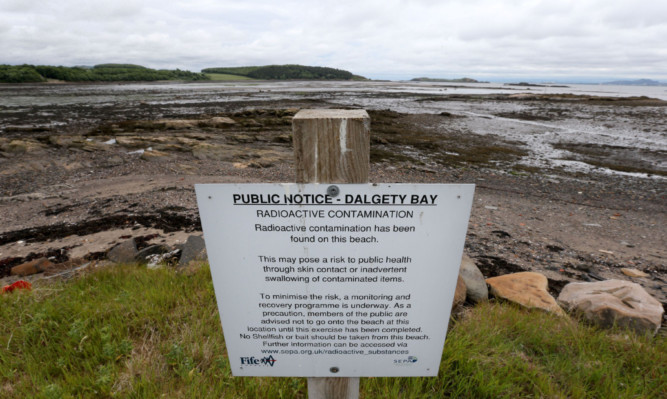The woes at Dalgety Bay beach have helped with a breakthrough in the way radiation is monitored.
Radioactive particles can now be detected at greater depths thanks to the application of artificial intelligence technology developed by researchers at Stirling University.
Leading the research was Adam Varley who said the new approach represented a key milestone in site monitoring and as it could make a major difference to the reliability of detection could lower the public health risk.
The breakthrough, which can find particles on average 10cm deeper than conventional systems, was developed using background readings taken at Dalgety Bay where radiation from dumped Second World War aircraft has been unearthed for more than 20 years.
The research was carried out in partnership with the Scottish Environment Protection Agency (Sepa), the lead regulator for historic radioactive contamination, and Nuvia Limited.
Sepa’s radioactive substances specialist Dr Paul Dale, who led the work at Dalgety Bay and is also an honorary senior lecturer at the university, said: “Dalgety Bay has brought to the fore the need for alternative techniques to identify radioactive contamination which is buried at depth.”
